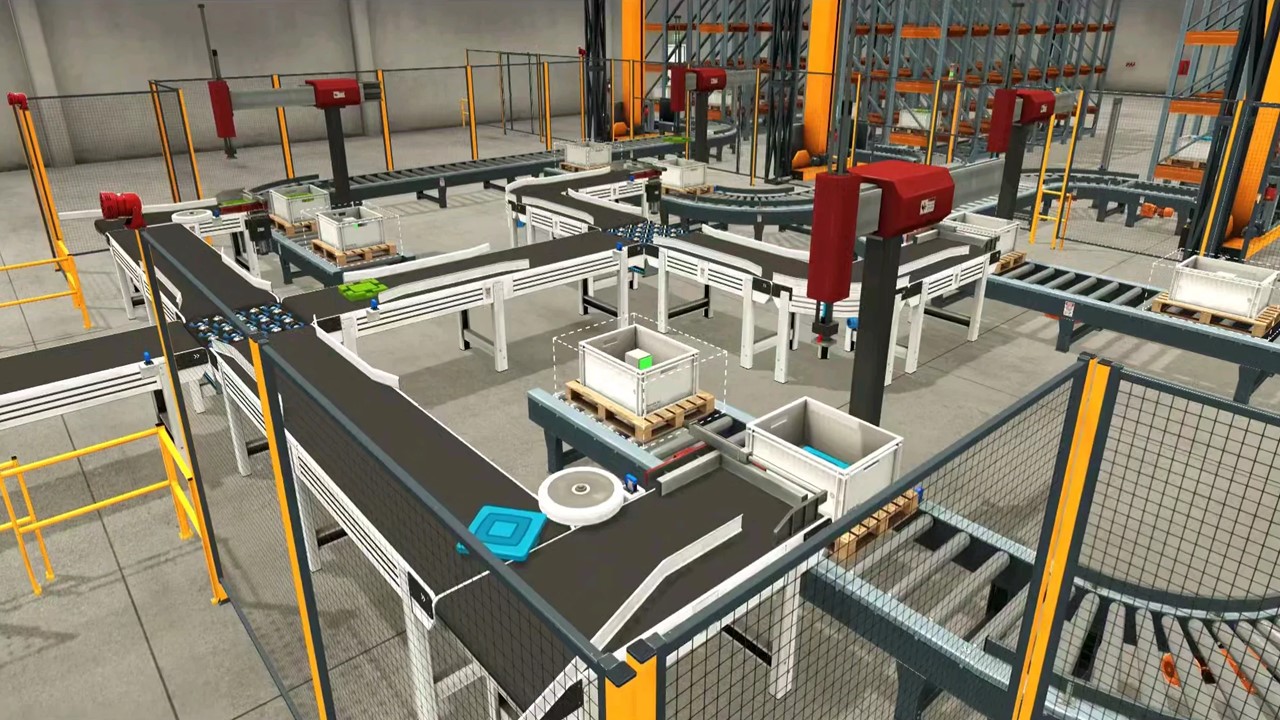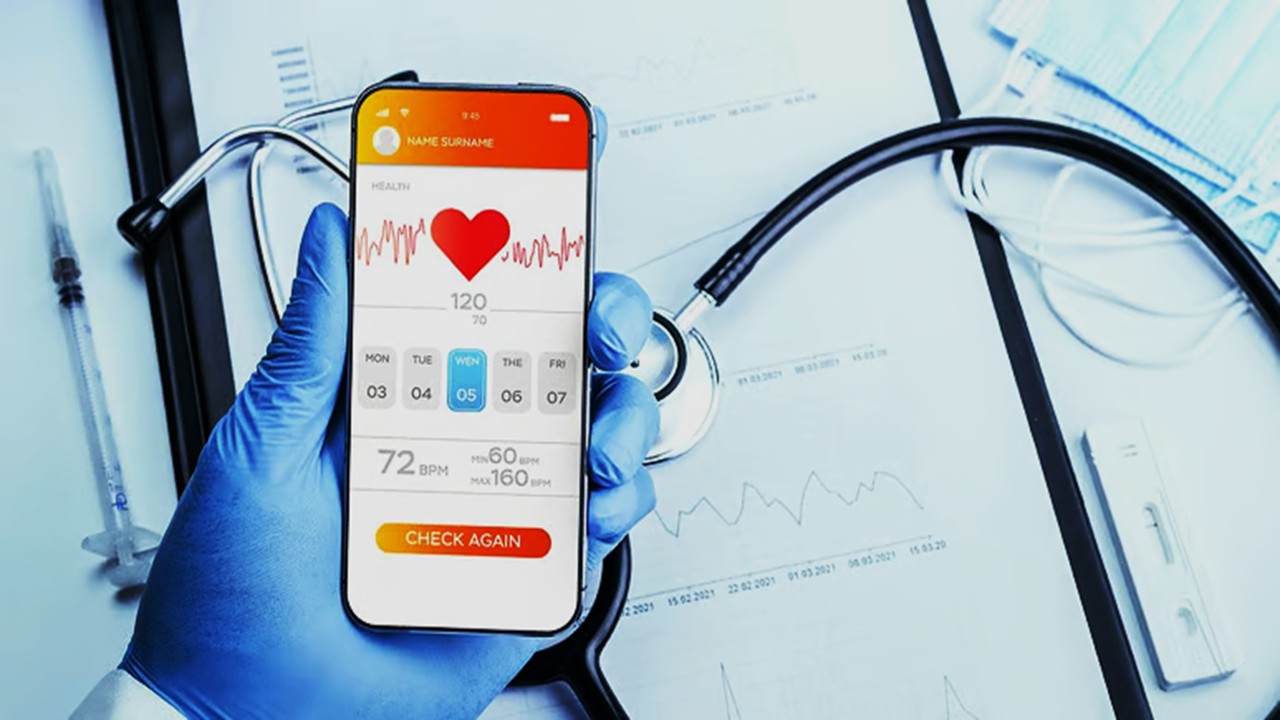The Cost of Clutter: Unveiling the Fragile Heart of Hospital Inventory Systems
At the epicenter of modern healthcare lies an operational paradox: hospitals, while being some of the most technologically advanced institutions, often manage their most vital materials—clinical supplies—with outdated, fragmented systems. The management of surgical implants, procedural kits, and physician-preference items is frequently anchored in manual tracking, inconsistent practices, and institutional silos. This archaic infrastructure has historically placed hospitals at a precarious crossroads, balancing the imperative of supply availability against the equally daunting threat of overstocking and waste. When inventory management falters, so too does clinical efficiency, financial stewardship, and ultimately, patient safety.
The operational theater, from the cardiac catheterization lab to the gastrointestinal suite, bears the financial weight of this misalignment. Without standardization, clinicians default to a “just-in-case” mindset, hoarding supplies in anticipation of shortages. While rooted in a desire to protect patient care, this reactionary behavior leads to sprawling inventories with unpredictable usage patterns and expiration-driven losses. Compounding the issue is the physical disconnect between clinical and logistics teams, often operating with separate mandates and incompatible workflows. The lack of shared visibility into the inventory lifecycle means items are often reordered based on anecdotal triggers—like discovering empty packaging—rather than data-backed necessity.
Northwestern Medicine (NM), a sprawling health system serving over a million patients annually across 11 hospitals, found itself ensnared in this exact predicament. Clinical and logistics teams lacked a shared language for inventory dialogue. Expired supplies quietly accumulated on shelves. Recalled items could not be easily traced. No technological infrastructure existed to link product disposition to enterprise resource planning systems. At its core, NM’s supply chain was reactive, a web of ad hoc decisions made under stress, with no systemic oversight. And in a domain where seconds matter and materials must be ready at hand, such opacity was more than inefficient—it was dangerous.
In a watershed move, NM leadership turned to clinical supply chain technology as a potential corrective lens. The goal was not mere automation, but transformation. What followed was a sweeping, multi-year quality improvement initiative aimed at hardwiring efficiency into the institution’s operational DNA. Rather than pursuing stopgap solutions, NM envisioned a holistic shift—one that would reimagine inventory management as a strategic function, integrated seamlessly with clinical care delivery. The project would span surgical theaters, procedural departments, and interventional specialties—bringing supply systems out of the shadows and into data-rich visibility.
Digitizing the Physical: Engineering the Clinical Supply Chain of the Future
At the foundation of NM’s initiative was the deployment of a sophisticated clinical supply chain platform—Cardinal Health™ WaveMark™ Solutions. This was not a mere inventory tracker. It was a digital nervous system designed to monitor supply location, expiration risk, usage patterns, and patient-linked consumption in real time. But technology alone was not the panacea. The initiative was intentionally architected with multidimensional planning, beginning with stakeholder alignment and culminating in an iterative, data-informed feedback loop.
Implementation began in 2017 within NM’s second-largest interventional department, chosen strategically due to its robust clinician-logistics collaboration and complex supply needs. Success in this pilot phase catalyzed a phased rollout across 37 departments in all 11 hospitals. Each unit adopted a hybrid integration model: clinical staff captured supply use at the point-of-care by scanning items into a digital portal, while logistics managed the backend flow—distribution, replenishment, and expiration surveillance. The system bridged these silos through centralized dashboards that flagged stockouts, recalled items, or misplaced materials in real-time.
More than just digitizing stockrooms, this technology encoded each product’s narrative—where it resided, when it was used, and whether it was wasted. Items scanned into the portal were directly linked to patient records, enabling comprehensive charge capture and usage audits. Those that expired, were opened and discarded, or were never used were flagged and categorized with surgical precision. This granular documentation allowed NM to generate what became the project’s most critical metric infrastructure: the Compliance and Opportunity scores.
Compliance reflected the rigor with which items were dispositioned through the system—whether used, returned, expired, or flagged for recall. Opportunity, in contrast, indexed inefficiency: waste, loss, or unlinked usage. These dual lenses formed the backbone of NM’s new quality logic. They enabled leadership to see, department by department, how supplies moved, decayed, or disappeared within the ecosystem. Importantly, the technology also offered “SmartPar” analytics, an advanced recommendation engine that dynamically suggested inventory levels based on historical trends and usage velocity.
But even more vital than the dashboards was the behavioral change they catalyzed. Departments once resistant to supply oversight were now armed with evidence-based feedback. The rhetoric shifted from blame to optimization. Conversations between clinicians and supply managers were reframed through shared data, not assumptions. In time, technology no longer felt like surveillance—it became support.
Cracking the Code: Data-Driven Insights into Compliance and Opportunity
By 2023, with the system fully embedded in 37 departments, NM had amassed a robust dataset capable of mapping transformation at scale. The results were startling. Product expiration rates, once a silent tax on operational efficiency, had improved significantly. Wastage—a chronic pain point in supply-heavy environments—had been halved. Inventory ownership itself was trimmed by over a tenth, releasing dormant capital and reducing overhead.
Yet the true revelations came through longitudinal Compliance and Opportunity scores. Hospitals with earlier implementations exhibited sustained improvements, revealing that system familiarity breeds optimization. One institution that began in 2017 maintained Compliance levels nearing perfection, while its Opportunity scores—representing waste—dropped to minimal thresholds. Conversely, more recent adopters showed a learning curve: initial spikes in waste (due to improved tracking accuracy) gave way to systematic reductions as staff adapted to the discipline of digital accountability.
This evolution revealed something more profound than operational savings—it showed behavioral resilience. The system was not simply identifying waste; it was recalibrating cultural expectations around supply ownership. Staff began to internalize the financial and clinical implications of leaving items unused or unscanned. Monthly dashboards became catalysts for local strategy. Units reviewed trends, investigated anomalies, and restructured practices. What had begun as a technology implementation matured into a process-oriented, evidence-based inventory culture.
The granularity of the system also allowed for root-cause investigations. When an OR posted persistent Opportunity spikes, the analytics team traced it to the transplant unit’s undocumented use of materials for off-site procurement missions. A simple procedural adjustment—requiring item disposition upon return—corrected the metric. In another case, storage carts bypassed regular scanning cycles, creating data voids. By embedding cart counts into daily workflows, NM restored system visibility. These micro-adjustments, while tactical, illustrated a larger principle: supply chain optimization is not linear. It is an iterative pursuit demanding constant vigilance, rapid iteration, and cross-disciplinary partnership.
From Reactive to Proactive: Forecasting Expiration and Mitigating Waste
One of the project’s most pivotal features was its ability to forecast risk. Through the “At risk of expiration” report, departments could visualize supplies approaching critical shelf-life thresholds and redistribute them to higher-use areas. This not only prevented waste but actively safeguarded patient safety by minimizing the likelihood of expired items entering the care pathway. Supplies that previously expired silently on underused shelves were now dynamically reallocated across the hospital ecosystem.
This proactive stance extended into vendor relationships. When high-expiration products were consistently identified, NM engaged suppliers in trade-outs or volume renegotiations. Internal PAR levels—those once set by guesswork or habit—were now recalibrated by algorithmic recommendation, backed by months of historical data. The SmartPar report transformed from a sterile analytic artifact into a living tool. It sparked collaborative discussions between logistics coordinators and clinical leads, anchoring strategy in quantitative rationale rather than institutional memory.
One Clinical Director remarked on the mental shift this catalyzed. Prior to implementation, the sheer cost of expired goods had been abstract—easy to ignore amidst the chaos of care delivery. With real-time dashboards illuminating expired spend by item, the financial gravity became undeniable. Suddenly, prioritizing supply optimization became not just a logistics concern, but a clinical imperative. The link between product stewardship and patient-first philosophy crystallized.
Over time, the confluence of smart reporting, cultural buy-in, and operational rigor produced what can best be described as supply chain intelligence. NM was no longer reacting to shortage crises or periodic waste audits. It was predicting behavior, preempting inefficiencies, and embedding fiscal prudence into the marrow of clinical operations. Inventory management had evolved from a logistical necessity to a strategic asset.
Engineering Trust: Rebuilding Clinical-Logistics Relationships from the Ground Up
Perhaps the most unexpected benefit of the initiative was its effect on human relationships. Before implementation, clinical and logistics teams often operated in mistrust, each viewing the other as the source of inefficiency. Clinical staff complained of unavailable supplies; logistics pointed to poor documentation and ad hoc usage. The divide was institutional, and mutual skepticism was the norm.
The supply chain platform, by offering transparency and shared accountability, gradually dismantled these barriers. Data empowered both teams to engage with facts rather than accusations. Issues that once sparked blame games now prompted joint investigations. The system revealed not just what went wrong, but why—and with that insight came solutions rooted in empathy and collaboration.
This evolution had a cascading effect on morale. While staff satisfaction was not formally quantified, anecdotal reports described relief. Nurses knew essential supplies would be present. Logistics no longer scrambled blindly to restock shelves. The ambient anxiety of uncertainty—so often ignored in operational calculus—was lifted. As a result, teams became more agile, focused, and resilient.
It is no coincidence that NM’s success correlated with early clinician involvement in the design and rollout process. By treating frontline users as co-creators rather than end-users, the project instilled ownership and pride. Staff were not just complying with a new system; they were shaping it. This participatory model proved essential to sustainability. When technology is imposed, resistance festers. When it is co-authored, adoption thrives.
The system’s dependence on user diligence and cross-departmental synergy also became its greatest strength. It enforced institutional learning, cascading insights from one department to another. Each implementation added a new layer of institutional intelligence, making the next deployment faster, smoother, and smarter. NM had, in effect, developed a self-reinforcing model of continuous improvement.
Sustained Precision: Charting Performance Trajectories Across Time and Space
Longitudinal analysis across NM’s 11 hospitals reveals that the benefits of clinical supply chain technology compound over time. Departments with early adoption, some dating back to 2017, showed consistent upticks in Compliance and consistent downticks in Opportunity. Meanwhile, newer departments—though starting at lower baselines—improved rapidly upon receiving targeted support. In some cases, lagging metrics prompted intensive investigations, uncovering hidden process flaws and triggering custom solutions.
For example, departments with unusually high end-of-quarter expiration rates were found to have a disproportionate number of supplies marked with December 31 as a default expiration. This skewed data visibility, requiring seasonally adjusted PAR calibrations. Elsewhere, the introduction of mobile storage carts introduced locational ambiguity, diluting compliance unless explicitly integrated into the scanning protocol. These findings underscore a truth often overlooked in supply chain theory: context matters. Systems must be adaptable, not uniform. Technology must bend to the nuances of workflow, not the reverse.
Yet, the overarching trendline remains clear. As departments matured in their use of the platform, they achieved sustained reductions in waste, expired inventory, and logistical chaos. More importantly, the project institutionalized a feedback culture, whereby quarterly and weekly reports weren’t just diagnostic—they were formative. They guided behavior, shaped habits, and informed leadership decisions.
Moreover, the metrics themselves evolved. What began as simple compliance tracking matured into a multi-dimensional analysis of financial exposure, process leakage, and supply resilience. Dashboards stopped being static report cards and became navigational tools—steering departments toward optimal material flow. By the end of 2023, the systemwide Compliance rate had stabilized at near-perfect levels, while Opportunity was approaching single digits. The convergence of these metrics represents not just success, but institutional transformation.
The Supply Chain as a Clinical Instrument: Aligning Infrastructure with the Patients First Philosophy
At its heart, this initiative was never simply about logistics. It was a clinical intervention. The availability—or absence—of critical medical supplies directly influences care delivery. A misaligned supply chain isn’t an administrative inconvenience; it’s a latent risk to patient outcomes. For Northwestern Medicine, this reality galvanized the integration of the clinical supply chain initiative into its core value system: Patients First.
With this philosophy guiding decisions, the project prioritized reducing the variability that so often undermines patient safety. Inconsistently available supplies, mismatched physician preference items, and expired instruments introduce friction into procedural workflows. By eliminating these variables through data visibility and process standardization, the clinical environment became more predictable, and thus more controlled.
The ripple effects extended beyond clinical outcomes. The emotional and cognitive burden on staff—particularly in surgical settings—was measurably lessened. When clinicians are forced to improvise due to missing or expired materials, the cognitive load diverts attention from patient-centered decision-making. By restoring supply reliability, the platform helped clinicians reallocate their focus back to the bedside, where it belongs.
This alignment of logistical accuracy with clinical efficiency is a rare but vital convergence. Too often, supply chain optimization is framed as a cost-saving venture. While financial stewardship remains a byproduct, NM’s experience demonstrates that clinical and operational excellence are not mutually exclusive. On the contrary, one empowers the other. The elimination of waste was not an end goal—it was a structural precondition for consistent, safe care.
Furthermore, by integrating the supply platform with the electronic health record (EHR), NM reinforced accountability at the individual and institutional level. Each product used in care could be traced, costed, and justified. This transparency not only supported accurate billing but also created a closed-loop system of responsibility. Supply data was no longer just the concern of administrators—it became part of the clinical narrative.
Over time, this reorientation redefined the role of the supply chain from a backend function to a frontline asset. No longer peripheral, inventory management was now central to NM’s quality strategy. The system provided a common language, uniting stakeholders from procurement to the surgical suite, all speaking through the dialect of data. In doing so, it turned the supply chain into a precision instrument—calibrated not just for efficiency, but for care.
Infrastructure as a Learning System: Institutionalizing Intelligence Through Technology
The project’s most enduring legacy may lie in the culture of learning it engendered. What began as a technology installation grew into a dynamic, adaptive infrastructure capable of sensing, responding, and evolving in real time. With every new implementation, NM refined its protocols, updated its training modules, and augmented its dashboards. The platform became more than a repository of metrics—it became a memory system.
This institutional memory enabled NM to transition from episodic improvement to continuous evolution. Failures weren’t concealed; they were analyzed. Variations weren’t dismissed; they were contextualized. And successes weren’t isolated—they were replicated across sites through procedural documentation and peer learning. In this way, each department became both a node in a system and a source of intelligence.
The iterative nature of the platform’s optimization also mirrored the best of clinical science. Root-cause analysis was routine. DMAIC cycles were embedded. Changes were tested, scaled, and institutionalized. These process-improvement techniques, often siloed in quality departments, were now infused into supply chain governance. This integration of clinical improvement methodologies with operational systems marked a paradigm shift in hospital administration.
Moreover, NM demonstrated that sophisticated technology does not need to be complex in implementation. By decentralizing responsibility and equipping frontline staff with intuitive tools, the system achieved both scalability and sustainability. What made the model resilient was not its technical architecture but its human-centered design. Every dashboard, every alert, every training was built with users in mind—not technologists.
This humanization of data is critical. In many healthcare settings, analytics are viewed as top-down instruments of control. At NM, they became shared assets, fueling dialogue rather than dictating action. Departments began holding data huddles, reviewing reports not as performance indictments, but as tools for problem-solving. It’s in this culture of co-ownership that real transformation flourishes.
And yet, NM remains vigilant. Even with five years of success, the system is not considered static. Leaders continue to assess feature utilization, solicit staff feedback, and refine reporting frameworks. In this ongoing feedback loop lies the ultimate achievement: the creation of a self-learning hospital, one where infrastructure is not fixed but fluid—evolving in step with the demands of care.
Final Reflection: Redesigning Health Systems from the Inside Out
In a healthcare landscape increasingly dominated by automation and AI, it’s tempting to see technology as a cure-all. But Northwestern Medicine’s story reminds us that tools are only as powerful as the systems—and people—that wield them. The implementation of a clinical supply chain platform wasn’t just an IT upgrade. It was a reengineering of the invisible architecture that sustains care.
This transformation was powered by an elegant triad: people, process, and platform. Each depended on the others. The platform provided visibility. The process offered structure. And the people brought purpose. Without mutual trust between logistics and clinical staff, even the most advanced system would have faltered. Without data governance and procedural rigor, insights would have languished. And without institutional leadership committed to the Patients First ethos, optimization would have been superficial.
The project’s metrics are impressive—dramatic reductions in waste, expiration, and inventory excess. But its true significance lies in what it portends for health systems globally. As hospitals grapple with rising costs, clinician burnout, and unpredictable demand, supply chain redesign emerges as a powerful lever. Not just for efficiency, but for equity. Not just for savings, but for safety.
Northwestern Medicine has demonstrated that when healthcare institutions think systemically—when they invest not only in products but in platforms, not only in staff but in shared accountability—they can transform even their most overlooked functions into engines of excellence. Clinical supply chain technology, once relegated to logistics, is now a central pillar of quality care.
And in this quiet revolution—one dashboard, one report, one scanned product at a time—a new kind of hospital is being built. Not with more beds or larger budgets, but with insight, discipline, and a relentless belief that even the most technical operations can be made profoundly human.
Study DOI: https://doi.org/10.1016/j.pcorm.2024.100410
Engr. Dex Marco Tiu Guibelondo, B.Sc. Pharm, R.Ph., B.Sc. CpE
Editor-in-Chief, PharmaFEATURES




















